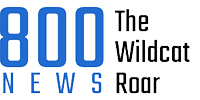The Network
A behind the scenes exploration at ESPN Studios
This past Thanksgiving I got the chance to take a trip to Los Angeles, California for a behind the scenes tour of ESPN. I must admit that at first I wasn’t that excited about ESPN since I’m not a big sports fan. But as I began researching the company, I learned that ESPN is just one of over 180 subsidiaries of Disney. These subsidiaries range from entertainment, movies, film to music. So knowing that there were possibilities to explore other genres piqued my interest. But what I saw and learned completely changed how I look at sports entertainment. So allow me to take you on a tour of one of the biggest companies in the entertainment world.
The complex in L.A. is a branch of the ESPN headquarters, which is located in Bristol, Connecticut. One of their responsibilities is to take over for the entire company and their programs should the headquarters in Connecticut have a power failure or equipment malfunction. I toured two studios. One studio is for SportsNation and Nación Deportes (the Spanish version of SportsNation) while the other is reserved for Sportscenter. Shows are either recorded or aired live. What I found most fascinating was the level of precision everyone performed at their job. Despite being able to do retakes, they ran the recorded show just as they would a live show. They worked as if they had only one chance to get it right and they did!
Next on the tour was the sound room. I just finished Drama 3 here at Westminster so I thought I knew a little bit about sound boards and what it takes to run one. But what I saw was truly amazing. The sound engineer works in a room with absolute silence so that he can adjust the audio of different voices, music, and sound effects. The only other thing he can hear is when the director calls for the next sound. Watching how the main control room and sound engineer worked independently on their individual responsibilities but at the same time depending on each other to produce a final flawless product was teamwork at its best.
Next we visited the Creative Services Department where many of the animations for the show are drawn and…well, animated. For example, the Sportscenter symbol that you see pop up before the show begins was made by them. Even simple things, such as the show’s title that appears down in the corner was created by this team. I also learned from “Music Licensing Specialist” about the complexity of using popular songs within entertainment programming.
I had the opportunity to talk with several people about their journey to ESPN. I learned that many of them didn’t start off where they planned for their life. Some of them hadn’t even expected to work in the sports industry. They had literally “started from the bottom and now they’re here”. Yet, despite the setbacks they had in the beginning, each of them fought through them to get where they are now.
I also met with Brandon “B-Lo” Lowe, associate producer at ESPN, who gave me his own account of what working at ESPN is like. The work is demanding but rewarding. For example, he told me that he would be working this Christmas, despite it being a holiday. This opened my eyes to the realization that the entertainment that I had taken for granted all these years was actually at the cost of someone else’s holiday and time with their own family. Since then, I’ve watched sports and entertainment programs much differently than I originally did, and I’m glad for the change in perspective.
After this I observed the Sportscenter pre-production meeting. It was much different than I had thought going in. Rather than a bunch of Men/Women in Black in a dark room, it was a group of friends who were so knowledgeable about their jobs that their work actually seemed like fun.
Afterwards, we went to take a quick look in the ESPN editing room before the show. Here, one or two people were taking footage from different clips and changing the resolution, choosing which angles to use, adding animations (the different arrows and circles highlighting players) and making sure everything would run smoothly. Although the job was stressful (especially with the looming deadline that was only a few hours away), they moved quickly and professionally. As they finished up their job I went up to the control room to watch the production team at work.
The team was led by Tommy Edwards, the studio director. While Edwards directed the entire team overall, the Associate Director, Vannessa Ford’s job required her to focus on the different animations coming up on the screen, as well as keeping an eye on the different changes to the program. This was because the show was constantly changing, to allow for commercials, insert new clips, and so that the show would end precisely on time (not too early or too late). This too amazed me because the show was live and they were constantly making adjustments in response to changes with only 30 seconds of advanced notice. Due to their expertise, quick thinking and teamwork, the show ran smoothly and without any problems.
My visit to ESPN was unforgettable. I learned so much about teamwork and performing well under pressure. I appreciate the valuable insight I received about career opportunities available within the company. I learned that ESPN really is much more than just a sports company. ESPN sets the standard for quality sports entertainment programming.



